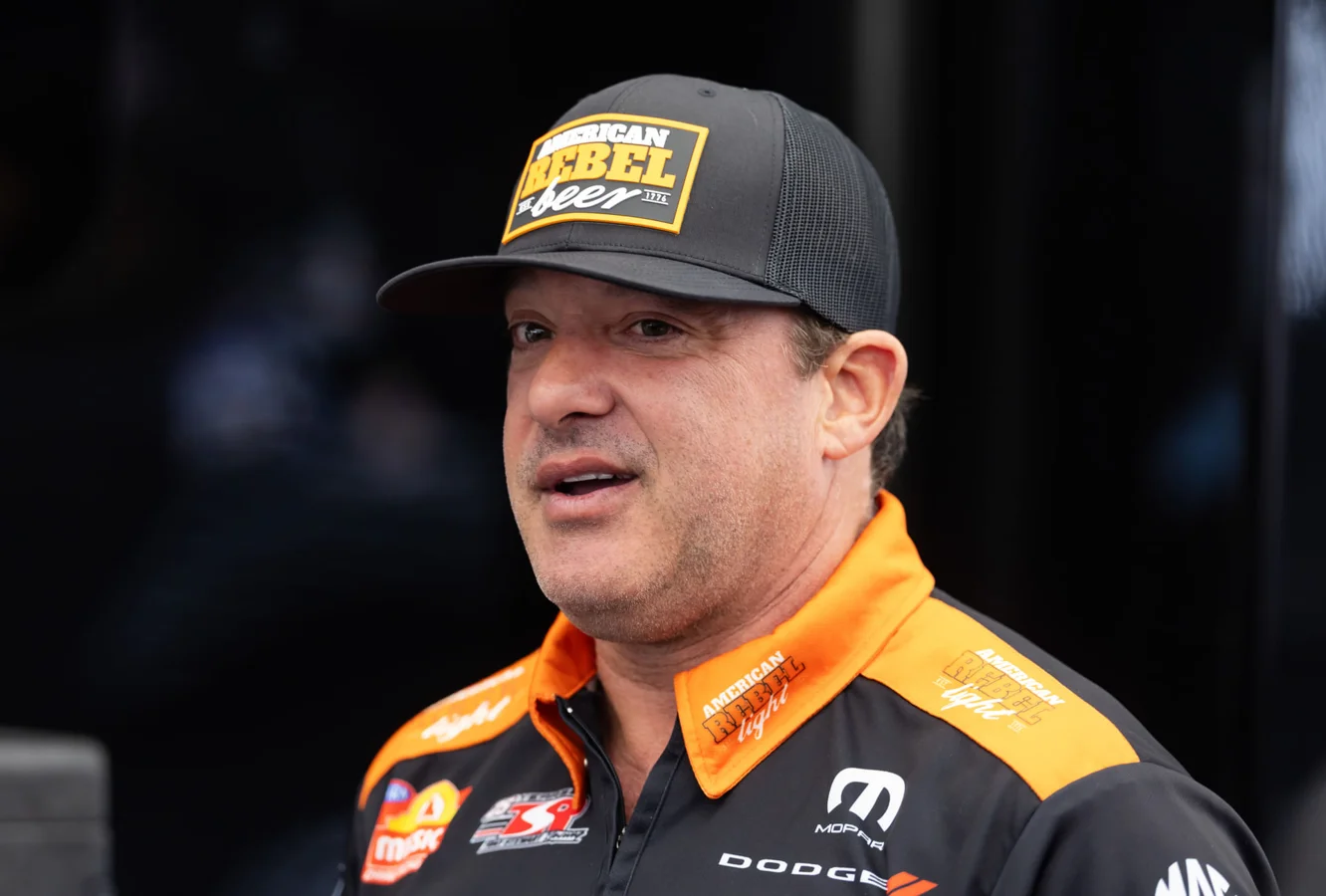Tony Stewart NASCAR criticism aero issues have persisted in the sport since his 2002 post-race comments at Richmond Raceway, and his warnings seem even more accurate today as NASCAR faces continued challenges with aerodynamics affecting racing quality and fan experience. Stewart’s initial concerns about aero-dependent cars and tough passing remain widely discussed, especially in light of changes brought by the Next Gen package and outspoken opinions from notable figures like Dale Earnhardt Jr. and Kyle Petty.
Stewart’s 2002 Warnings Echo in Today’s NASCAR
When Tony Stewart celebrated a win at Richmond Raceway in May 2002, he also voiced frustrations about growing aerodynamic challenges. Stewart warned that an over-reliance on aero grip would make overtaking difficult and dampen the excitement that brings fans to the track. His view was that, unless action was taken, the racing product would only decline further.
In his words:
“We’ve got a big problem starting here with aerodynamics and how aero-dependent these cars are getting. We’re getting IndyCar-style racing in Winston Cup cars, and something is going to have to be done about it soon, or else we’re going to start putting on bad races for the fans….but I hope it gets better before the race fans quit coming,”
he had said (via X/Nascarman). —Tony Stewart
Fast forward to recent seasons, and Stewart’s prediction is apparent in debates over NASCAR‘s Next Gen package. Concerns about “dirty air”—that is, turbulent airflow from leading cars making overtaking harder—have intensified. Dale Earnhardt Jr. has observed that the Next Gen car now handles more like an IMSA sports car, and Kyle Petty argues that NASCAR has drifted far from its stock car roots, essentially leaving them behind in 1958. These persistent issues have shifted pressure onto tire management, as worn tires sometimes offer the only real chance to pass.
Adding more detail, Stewart also commented:
“Any disturbance in the air in front of you directly affects how your car drives, and at Richmond, you’re going through the same set of problems that you do on a mile-and-a-half speedway. It seems like it’s getting to the shorter tracks, and the next thing you know, at Bristol, we’re going to have this problem. If you get that problem at Bristol, then we’ve pretty much taken a lot of this sport away from what it used to be,”
Tony Stewart had added. —Tony Stewart
Modern Examples Highlight Ongoing Aero Struggles
Recent races have only amplified these concerns. At this year’s Bristol race, drivers reported almost uniform lap times due to a lack of tire falloff, with Kyle Larson dominating by leading 411 out of 500 laps. This showcased what Stewart had feared: little change in running order because of aero-related passing limitations, removing the unpredictability that fans appreciate.
The impact on fan interest has become more pronounced as competitive battles become rare, and drivers struggle for opportunities to move forward on track. The situation has brought Stewart’s original criticism back into the spotlight, as the very elements he warned about over two decades ago persist in the sport.
Is There a Solution? Tire Strategies Bring Hope
Despite widespread debate and frustration, there are occasional bright spots. The recent Cook Out 400 at Richmond Raceway offered a glimpse of what fans have been missing. In that event, Goodyear’s option tires wore down more rapidly than in previous races, forcing teams to abandon predictable fuel strategies and opening the door for more lead changes. This mix-up ultimately allowed Austin Dillon to claim an unexpected victory, giving fans a more dynamic and engaging race.
This approach demonstrated that factors beyond aerodynamics, such as tire degradation, can make a significant difference in race quality and unpredictability, at least temporarily offsetting the effects of aero dependence.
Tony Stewart Faces Fallout from Team Decisions
As the focus on the track intensifies, Stewart recently dealt with a separate controversy off-track. Tony Stewart Racing’s announcement of veteran Donny Schatz’s departure after eighteen years came just ahead of major World of Outlaws Sprint Car Series events, drawing criticism from fans and observers.
Stewart did not shy away from addressing the backlash, underlining the complexity of managing a professional racing operation:
“If they’re so smart, I’d like to see them on a program, you know? It’d be really fun to watch them step on their d*ck and suffer, and think they know all the answers of what it takes to a professional race team,”
he said in an interview with Flo Racing. —Tony Stewart
Schatz’s long list of accomplishments with Tony Stewart Racing includes eight series titles and nine Knoxville Nationals victories, making their split a significant moment in dirt racing. Nonetheless, Stewart emphasized the need for tough choices in the pursuit of sustained team performance.
The Broader Impact: NASCAR’s Path Forward
The ongoing discussion around Tony Stewart NASCAR criticism aero issues highlights the challenges facing motorsports organizations as they balance technical advances with the core excitement that keeps fans engaged. NASCAR’s struggle to address passing difficulties, aero dependence, and diminishing unpredictability has prompted calls for new solutions, whether through tire strategy, car design changes, or other innovations. As teams, drivers, and fans await further developments, Stewart’s decades-old warnings remain relevant, reminding the sport’s leaders what’s at stake if the racing product continues to falter.


